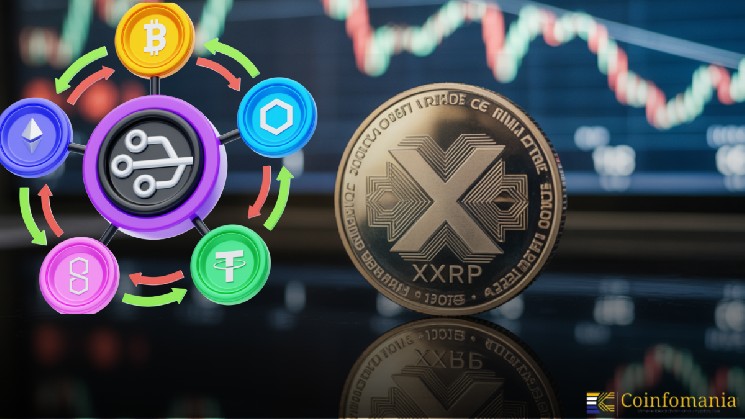The recent strategic choices of Ripple-to-custody and stablecoins show that the company is no longer speculative and is embracing it at the infrastructure level. A recent article by @Xfinancebull highlighted that $XRP will become an option rather than a choice the moment Ripple improves its custody and stablecoin integration. This is a new development that could move blockchain into the standard operating infrastructure of banks worldwide. Ripple’s long-term goals are clear. Ripple wants to transform blockchain into a secure, regulated, and scalable platform for the international financial system.
The moment Ripple gains custody and stablecoins, $XRP will no longer be an option.
At that time, blockchain will become the standard operational infrastructure for banks.
It’s not hype. It’s not hope. infrastructure.
This isn’t just a trade, it’s a slow-motion acquisition.
Know what you have! $XRP! pic.twitter.com/4LOemoAnLD
— X Finance Bull (@Xfinancebull) October 20, 2025
Foundation of institutional investors’ trust
Custody remains the key to institutional investment in digital assets. The custody solution provided by Ripple also has secure storage, compliance, and governance value for banks and financial institutions. Ripple, in collaboration with BNY Mellon, one of the world’s largest custodians, took control of the RLUSD stablecoin in July 2025. This collaboration introduced traditional bank trusts into the Ripple ecosystem. This means financial institutions can safely store and trade digital assets under regulated conditions. Ripple is eliminating one of the biggest obstacles to blockchain adoption in financial security and trust by providing institutional-level controls and compliance.
Ripple and stablecoins
The second pillar of Ripple’s corporate strategy is stablecoins. Multi-purpose cross-border payments and treasury management requires the stability of RLUSD, Ripple’s stablecoin pegged to the US dollar. In contrast to volatile cryptocurrencies, stablecoins have a 1:1 peg with fiat currencies, providing predictability for institutions that need to transfer large amounts of money. The infrastructure created by XRP leverages RLUSD to make real-time payments faster and more transparent. The centralization of stablecoins into the Ripple ecosystem also aligns with the central bank’s insistence on digital currency interoperability, making Ripple a leader in the interaction between traditional finance and the blockchain era.
Dual power of custodial coins and stable coins
The combination of custody and stablecoins gives Ripple a competitive advantage. This two-level infrastructure allows financial institutions to securely move assets while maintaining liquidity and compliance. Ripple’s model simplifies back-office operations and consolidates payments, compliance, and governance into a unified blockchain-powered infrastructure. With the development of infrastructure by Ripple, the role of strategic value for $XRP becomes a natural outcome. Since RLUSD manages stability and custodial compliance, $XRP can be considered a bridge currency that allows instant conversion to fiat currency.
Market and regulatory environment
The approach adopted by Ripple is in line with the growing regulatory clarity at the global level. As financial authorities are gradually clarifying the structure of stablecoins and digital asset storage, regulated banks can now also enter the blockchain ecosystem. Ripple’s relationships with major banks and compliance with KYC/AML standards will strengthen Ripple’s role in this changing landscape. Additionally, the cooperation between Ripple and BNY Mellon demonstrates the increased level of trust between traditional financial systems and blockchain vendors. The Xfinancebull article frames Ripple’s development as a slow-motion takeover. These words represent Ripple’s infrastructure-first attitude. A focus on controlled, predictable, and scalable systems will bring about change. This change in institutions is slow but potentially irreversible.
Ripple’s dual nature of custody and stablecoin will be an important move towards institutionalizing blockchain technology. This stack combines the security, compliance, and efficiency that banks need in the digital age. The change in the utility of $XRP in this context represents a shift from speculative crypto trading to infrastructure requirements. With Ripple actively building partnerships and developing its ecosystem, blockchain is moving closer to becoming the standard operating layer of global finance. This is not a passing fad, but the next step in the advancement of digital infrastructure.


